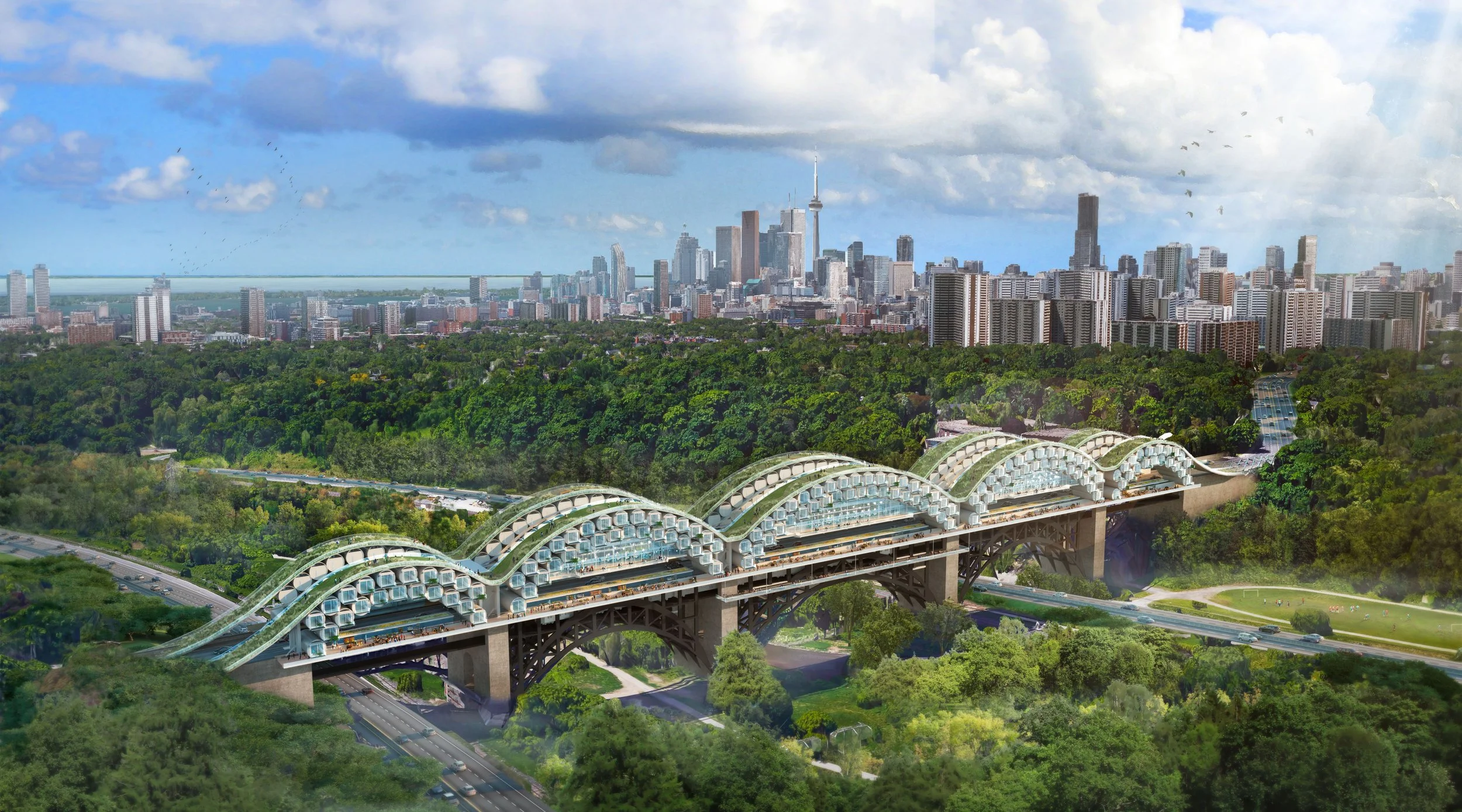Farrow Partners Re-Imagines Urban Infrastructure
“What if bridges were designed as long term, multi-use, high performing, revenue producing assets rather than single function, costly liabilities?”
Infrastructure requires consistent investment in order to keep up with ongoing repair, but what if it could mitigate its own costs by transforming into a new urban destination?
The pursuit of infrastructural maintenance is traditionally underfunded, causing transportation, roads and bridges to be in a constant stair of disrepair. Farrow Partners proposes a ‘Living Bridge’ strategy that combines the physical infrastructure of bridges with commercial, residential, and recreational uses.
Inspired by the mixed-use Venetian bridge, the Ponte Vecchio, the Living Bridge combines human-scale, walkable, urban assets with an integral transportation route. The result is a roadway and transit system that also features a park, market stalls, restaurants, and housing. By increasing its provision of uses, the Living bridge has the possibility to support additional revenue for future maintenance.
The Living Bridge strategy would generate a new urban destination out of a previously mono-use transportation link. A rolling park drapes over the arches of GRIP Metal housing units, while lively market stalls occupy the street level, and two transportation systems run parallel below. The Living Bridge works to prioritize the human body over the car by privileging program that serves and encourages rich social interaction.
Read more about the Living Bridge in the Canadian Architect article

